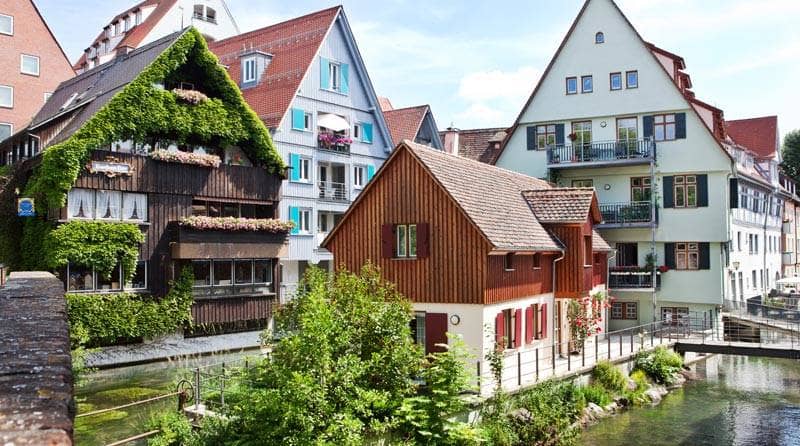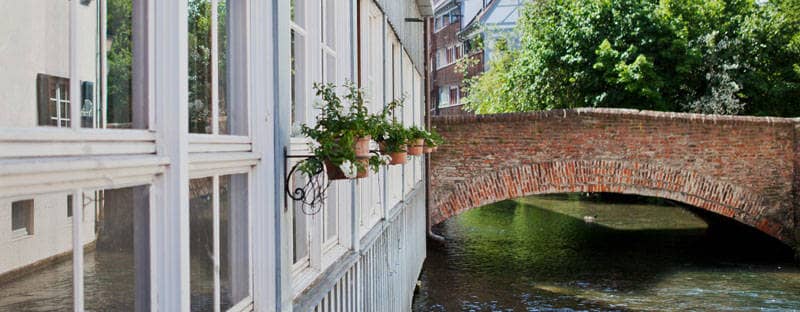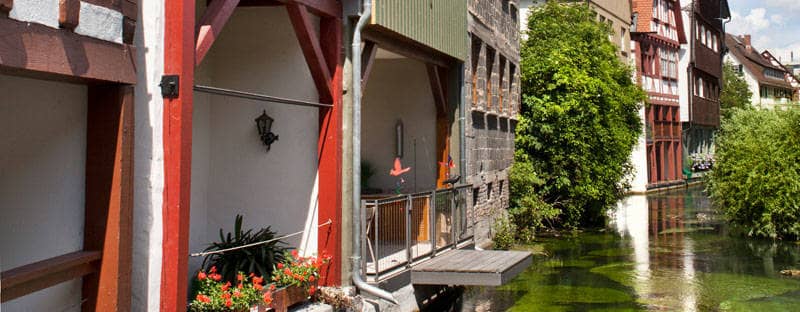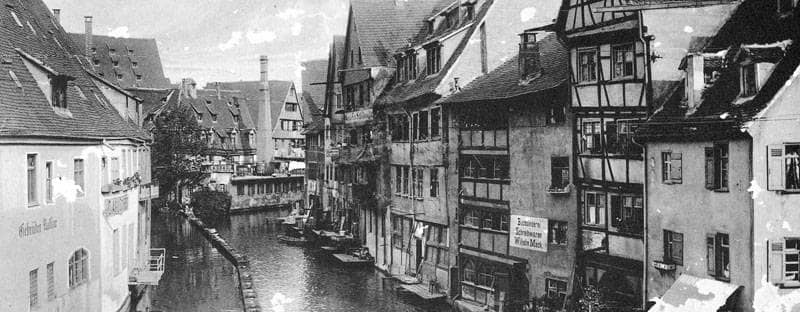Fishermen's and Tanners' Quarter

© Stadt Ulm

© Stadt Ulm
Two branches of the river Blau run through the quarter and then flow into the Danube. Many of the beautiful buildings from the 15th and 17th century actually have part of their foundations in the water. Because the soft ground has given way, the buildings have subsided over time. This tilting is what gives the Fischerviertel its typical charm.

© Stadt Ulm
Fishermen settled on the land during the Middle Ages. They headed out onto the Danube in small boats and returned with fresh fish. Shipbuilding later developed into an important economic sector, producing shallow wooden boats with box-shaped structures. These later became known as The Ulmer Schachtel (boxes) due to their design. They transported people and goods to countries further down the Danube.

© Stadt Ulm
Although you usually hear people refer to the Fischerviertel, the proper name of the district is the "Fischer- und Gerberviertel". The position next to flowing water was also ideal for the tanners ("Gerber"). Their houses bear impressive witness to leather production. The animal skins were processed and left to drip dry on the galleries (balconies) that rise on wooden pillars from the shallow water. The water power also kept a total of seven mill wheels running.

© Verlag B. Walcher, Ulm 1914
Of course, life in former times had little to do with old town romanticism. A terrible stench from the rotting animal skins permeated the streets. That’s no longer a worry today. Instead, you can enjoy the atmosphere in a café or restaurant. They’ve understood good food and drink in the Fischerviertel for centuries.
Text: Marlene Müller

